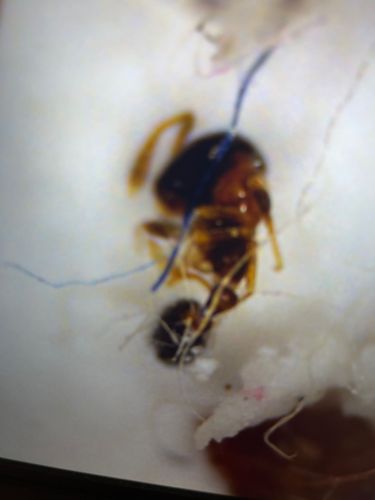Ant (Formicidae)
Scientific Name: Formicidae
Order & Family: Hymenoptera, Formicidae
Size: Typically 2 mm to 25 mm (0.08 to 1 inch) in length, depending on the species.

Natural Habitat
Widely varied, including forests, grasslands, deserts, urban areas, and homes. They often build nests in soil, wood, or other structures.
Diet & Feeding
Highly diverse, depending on the species. Many are omnivores, feeding on sugars (nectar, honeydew, fruit juices), proteins (other insects, dead animals), fungi, and seeds. Some are specialized predators or fungus farmers.
Behavior Patterns
Ants are social insects living in highly organized colonies that can range from a few dozen to millions of individuals. Colonies consist of queens (reproductive females), males, and sterile female workers. They exhibit complex behaviors including foraging, nest building, defense, and communication through pheromones.
Risks & Benefits
Risks include potential for property damage (e.g., carpenter ants tunneling in wood), contamination of food, and painful stings or bites from some species (e.g., fire ants). Benefits include their role as pollinators, seed dispersers, natural pest controllers (preying on other insects), and decomposers, contributing to nutrient cycling in ecosystems.
Identified on: 9/5/2025